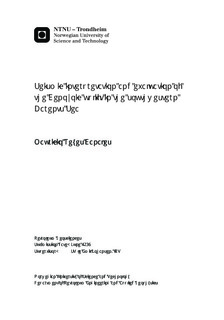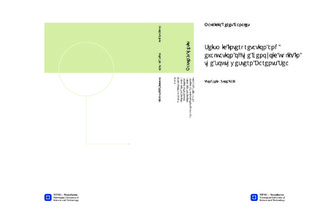| dc.description.abstract | Several studies have suggested considerable uplift and erosion in the western Barents Sea and Svalbard margin during Cenozoic times. After continental breakup of the Norwegian-Greenland Sea, a primary tectonic uplift was induced as consequence of the heat transfer during the margin transform stage. This Cenozoic uplift caused a sub-aerial terrain that was massively eroded, creating prograding wedges along western Barents Sea margin. This massive erosion, related to intense glacial activity during Pliocene-Pleistocene times generated a secondary isostatic uplift that maintained an elevated glaciated terrain.Seven 2D seismic lines and two wells have been studied to understand the Cenozoic geological history of the southwestern Barents Sea. To describe the main features based on seismic images, and to study the magnitude and consequences of the major Cenozoic uplift and erosion in the southwestern Barents Sea were the main objectives of this thesis. The methodology to interpret these profiles consisted primarily in observing the main seismic features of these images. After this, the main reflections were marked and then a geological model was proposed. Finally, these geological models were tied with previous regional investigations, making possible the understanding of the geological history for each line. The first interpreted image was a seismic line intersected by one of the wells, from which a seismic-well tie was done. This well and previous studies provided key information in order to date the main reflections and have a better understanding of the geological evolution and lithological composition of the study area. Almost all the seismic lines show similar features and have a close-related geologic history. The Vestbakken Volcanic Province (VVP) was marked during the seismic interpretation and is linked with the continental breakup of Norwegian-Greenland Sea. These volcanic flows were easy to distinguish in the seismic lines and their presence was confirmed by one of the wells. The pre-glacial sediments (Paleocene-Lower Miocene) were deposited and affected during the shear margin setting that dominated the southwestern Barents Sea during those times. Transpression and transtension during this stage could explain the configuration of these strata. The glacial sediments (Pliocene-Pleistocene) were deposited after the Cenozoic uplift and massive glacial erosion, an evidence of this is the main truncation that separates the pre-glacial and glacial sediments. These glacial sediments formed the massive prograding wedges (ex. Bjørnøya fan) visible along the margin. By studying the available well data it was possible to infer the magnitude of the uplift. To estimate the magnitude of the total uplift during Cenozoic times, a method based in the use of empirical depth-porosity shale/sand trends was applied and then compared with depth-porosity trends calculated from the well logs. When comparing the obtained results (900±100 m of uplift) with previous estimations (from 700 m up to 1500 m of uplift), there is a good correlation between the depth-porosity trend method and the variable estimated range for the total uplift in this area of the southwestern Barents Sea margin. | nb_NO |

